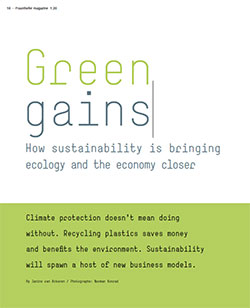
Carbon fibers reinforce plastics and thus provide lightweight components with the necessary stability. But they are also extremely expensive, and it takes a lot of energy and petroleum to produce them. In contrast, natural fibers can be manufactured much more sustainably and are more affordable when mass-produced.
Efficient lightweight solutions play a key role in the aerospace sector, rail transport, shipping and, more importantly, the automotive industry. They reduce overall weight and thus help to decrease energy consumption and emissions. The fibers found in lightweight components featuring fiber-reinforced plastics tend to be made of carbon. The Fraunhofer Institute for Wood Research, Wilhelm-Klauditz-Institut, WKI is working on new processes to replace fossil-based fibers. “We use natural fibers such as wood, hemp, flax and jute, which also meet the specifications,” explains Ole Hansen, project manager at Fraunhofer WKI.
While natural fibers offer comparably lower strength and rigidity, these values are still high enough for many applications. Thanks to the naturally grown structure, natural fibers are better at absorbing sound and vibration. They are less likely to splinter, which can help to reduce the risk of injury in accidents, and working with the material does not irritate the skin. In early 2019, Porsche released a small production run of a couple of hundred vehicles – the Cayman GT4 Clubsport – featuring body parts made of natural fiber-reinforced composites. The economic benefit: it takes less energy both to produce natural fibers and then to recycle them at a later date. And once they can be mass-produced, they should be significantly cheaper than carbon fibers.
